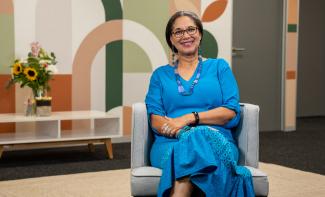I started working at USAID on April 15, 1996. USAID had just established a health program and we were working directly with the South African Government on developing a primary health care program called the Equity in Integrated Primary Health Care Program that focused on strengthening equitable health services for all South Africans.
This was very early in the new democracy, and the South African government had very recently issued the edict of free primary health care for all, but was facing multiple challenges in providing primary health care services. As such, our first USAID health program in South Africa focused on strengthening the primary health care footprint. The EQUITY Project was designed to assist South Africa's post-apartheid transformation into a country where all citizens, regardless of race, color, or creed, could access high-quality health services. It was an interesting and difficult time. The new democratic government had begun a process to transform the economy to undo the deep rooted structural health inequalities, and South Africa was also dealing with all the other post-apartheid inequities such as housing, education, to name just a few.
The improvements that we have achieved are a result of collaborative partnerships and hard work, and most importantly, an acceptance of both the challenges and opportunities presented by the new policies and new commitments to change and progress towards health for all.
We were starting to see people that were being brought to the facilities in wheelbarrows because they were so sick with AIDS that they could not walk. That's when we realized that we needed to focus on strengthening primary health care and supporting smaller community-based organizations.
HIV/AIDS denialism also had a significant impact on primary health care in the early 2000’s, resulting in a number of avoidable deaths. As a result, the program in South Africa was tagged to get strong funding support to make sure that we could have a hospice and palliative care response, which included the training of those at the coalface, the nurses, the community health workers, as well as focusing on HIV prevention.
I was assigned the Orphans and Vulnerable Children (OVC) portfolio in 2000. Our job was to make sure that we supported the children whose parents, aunts, sisters and grandparents had died or were dying, amongst others. Children were looking after children in their households.
The work was heart-rending and we were moved to act in our personal capacity too. Along with the health office director at the time, we set up a collection box. If you were visiting a household with vulnerable people, especially children, you went armed with food, clothing, stationery, and large bags of food so that they could continue to eat and go to school.
We have come a long way since then. From a program perspective, South Africa has had the incredible honor of supporting the most HIV-positive people on treatment in the world. In 2022, USAID through funding from the U.S. President's Emergency Plan for AIDS Relief (PEPFAR) was able to support over 2,1 million people on antiretroviral therapy (ART) in South Africa. Through the OVC program we served more than 560,000 orphans and vulnerable children, providing support to their families and communities as well. We're all working together for the good of those in South Africa who need our services. Since then I have continued to do just that.
It's always been very clear that you cannot do this alone. There is no PEPFAR program in South Africa without the government of South Africa and without the people of South Africa. If you want to go fast, go alone. If you want to go far, go together. And that has been PEPFAR’s story.
Anita Sampson is the Deputy Director, Bilateral Health Office at USAID Southern Africa

